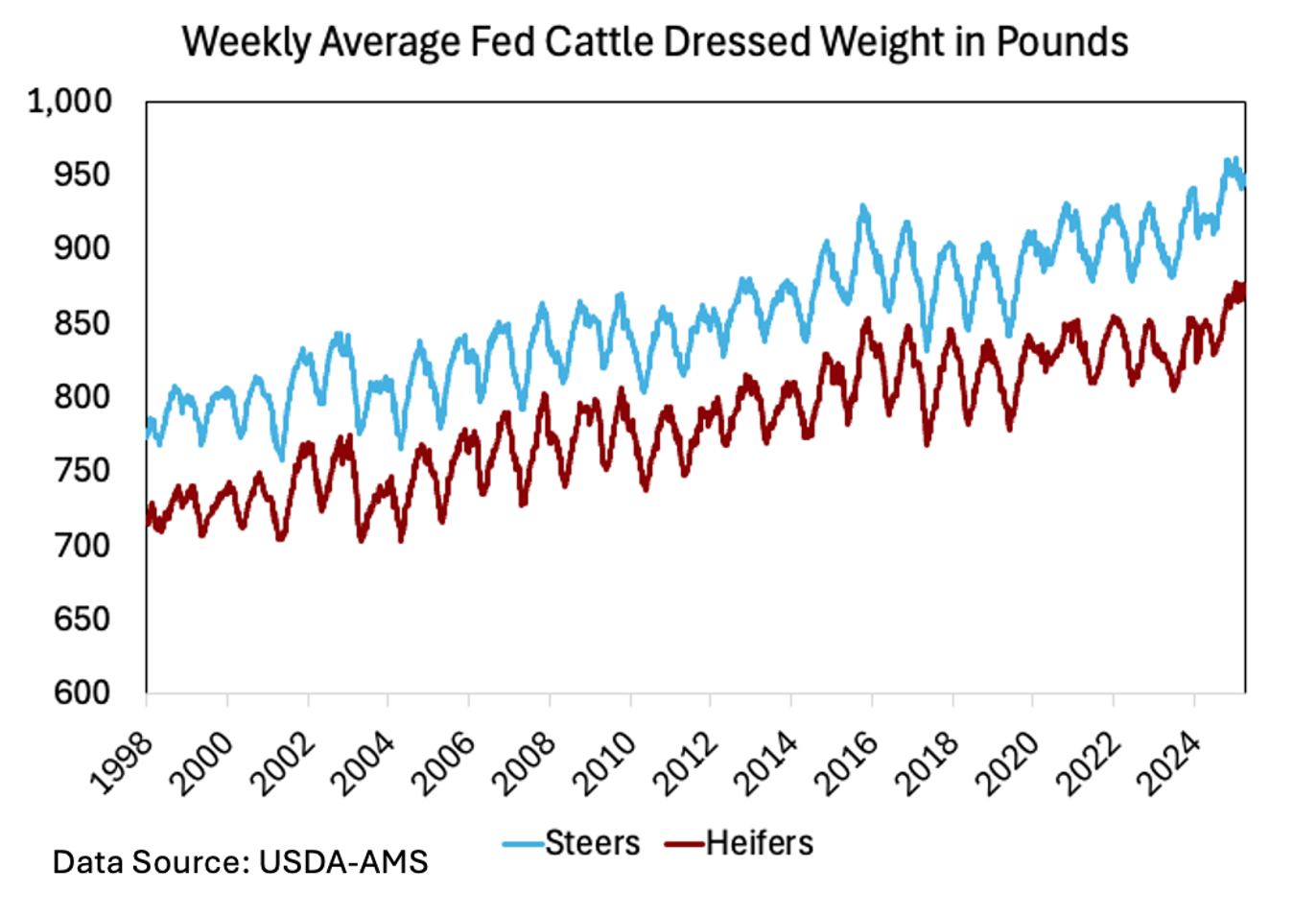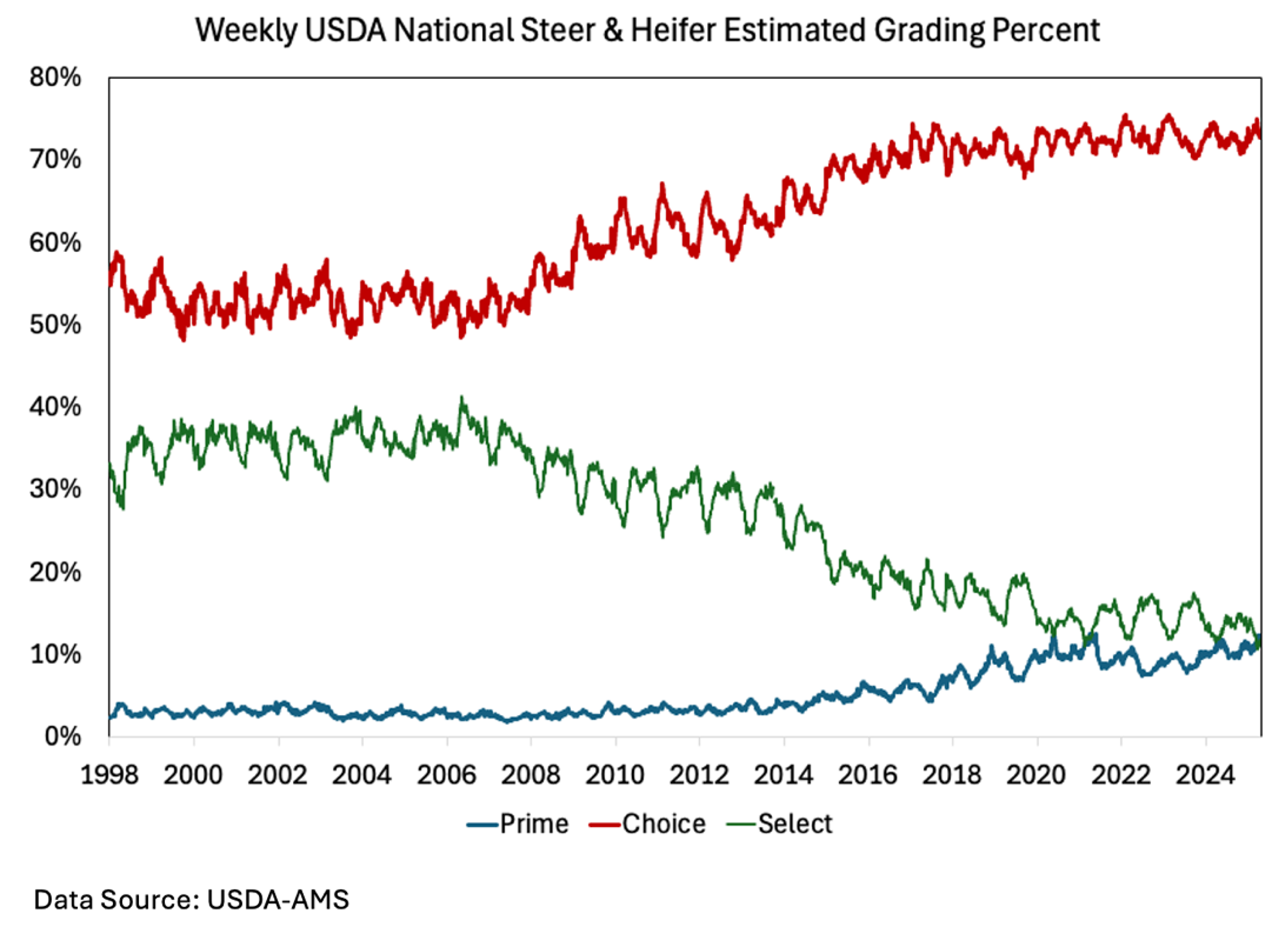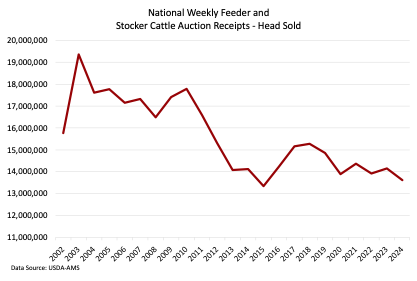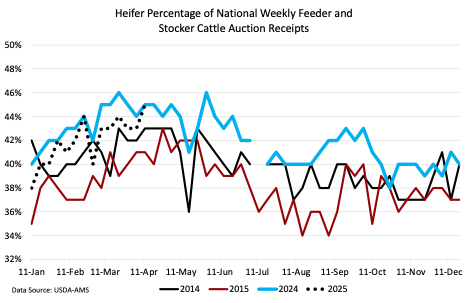Cattle prices have continued to push higher over the past few months. Auction prices for feeder steers are up 5 to 10 percent since mid-April, depending on location. Live steer prices averaged $238.68 last week – another record and 13 percent above mid-April prices. Prices across feeder cattle and live cattle are 20 to 25 percent above year-ago levels.
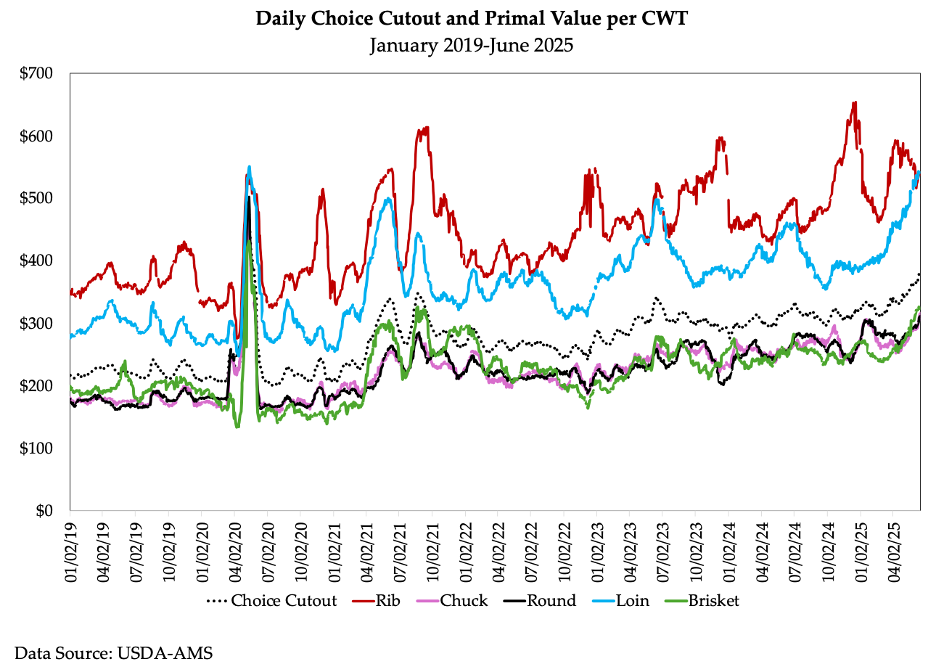
Beef values are also pushing higher. The Choice boxed beef cutout value was $382.11 per cwt on Monday, June 16. This is a 19 percent increase above year-ago levels. The weekly choice cutout has been increasing each week since mid-April. The continued weekly increases have already pushed past when many would normally expect the seasonal peak to occur ahead of summer grilling season. For reference, the only other time the cutout has been higher than $380 per cwt was a COVID-driven three-week period during May 2020. The chart above shows the cutout value over the past 5 and ½ years. The considerable increases in the loin and brisket are noteworthy.
Looking at the primal level, the increases vary. The rib primal value was $538.29 (up 10 percent from a year ago), chuck value up 21 percent (to $316.32), round value up 20 percent ($311.73), loin value up 19 percent ($541.41), brisket value up 30 percent ($324.36), short plate up 29 percent ($270.75), and flank up 26 percent ($211.57). Each of these changes show how important the markets for individual primal (and cuts) are to the overall carcass and animal value.
Tight supplies of cattle and beef are supporting record high prices. It has been particularly interesting this year to see these continued increases in the cutout value push into June. April and May are the more common months for the choice cutout to peak, although the past few years have differed. In 2024, the choice cutout peaked the first week of July, and in 2023 it peaked in mid-June. 2025 is shaping up to be more similar to the past two years.
Maples, Josh. “Cattle and Beef Prices Push Higher.” Southern Ag Today 5(25.2). June 17, 2025. Permalink


